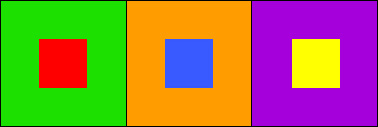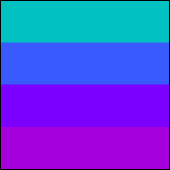
Understanding the color wheel and using color theory in your artwork is a good idea for any artist, and especially for oil painters. In this article I’ll go through the basics of color theory (using a traditional artist’s color wheel) and explain ways that oil painters and other artists can make use of that information.
In the color wheel pictured above, there are twelve colors. Although they might be self-explanatory, starting from the top and going around clockwise they are: Yellow, Yellow-orange, Orange, Red-orange, Red, Red-violet, Violet, Blue-violet, Blue, Blue-green, Green, and Yellow-green.
I’ll sometimes refer to a few of them by more common names, like Purple (for Blue-violet), Turquoise (Blue-green), or Magenta (which is pretty close to Red-violet). Other names like Light or Dark Orange, or even Chartreuse (for Yellow-green), are sometimes used by artists as well.
There are three Primary Colors which are the most important.

It’s not always easy, however, since no tube of paint contains purely one color. All of them have traces of other colors as well.
If you’re looking for more specific information on that, check out this article on mixing oil paints.
The primaries are the most powerful colors—in fact, blue and red are known specifically as power colors (think muscle cars), and yellow is the brightest color on the whole color wheel.
Mix any two of those primaries together and you’ll get one of these next three hues: the Secondary Colors.

It is important to know that scientifically there are more requirements for being complementary colors.
For our purposes, however, opposites on the color wheel works just fine. (You can read more about scientific color complements here at Wikipedia.)
Complementary colors, when put together, appear more vivid then when apart.
Green and Red, Blue and Orange, Yellow and Purple: each color is enhanced by the closeness of its “opposite.”
How does this apply to artists? Well, just because they’re called complementary doesn’t mean you should necessarily use them right next to each other at full strength. That can be rather garish.
However, if you DO want to add some extra punch to your color, including its complement somewhere in your artwork will help to draw emphasis to it. Also, some plein air painters will cover their canvas with red before painting a landscape so that the greens and blues they put on top if it will really jump out.
And as I just mentioned, colors like blue and green both will react similarly to red because in general they’re both opposite to it.
Of course, there are still other colors left in the wheel—the Tertiary Colors, commonly known as Intermediate Colors.

As long as you’re painting from nature, most colors that you see won’t be primary or secondary; they’ll be some mix of softer color, like these intermediates.
The reason for that is because things like atmosphere (yes, air has a color!), distance, and lighting will blend with and change the colors of any object.
The same rules of complements do apply with these six colors as well, although the effect is usually less dramatic than with primary and secondary colors.
Now that we’ve filled out the color wheel, lets look at some other groups of colors that affect art, starting with the Warm Colors.
Warm Colors go from Yellow to Red on the color wheel, and will appear to visually come forward in artwork, towards the viewer.
No matter the innate color of an object, under bright light or heat (like the noonday sun) an entire scene can actually be colored completely by warm hues.
However, you’ll also want to look for Cool Colors.
Those often appear when a blue sky reflects cold light into the shadow areas that the sun can’t touch.
You’ll notice that I haven’t classified all of the colors as warm or cool—that’s because a few of them can go either way depending on what colors they’re placed next to.
Greens are often cool colors, but against a background of blues, they’ll come forward.
And Red-violet (or Magenta) can do the same thing, switching back and forth in different situations.
You can always use warm and cool colors to increase depth and space in your paintings. As light travels across a flat surface, it will often be brightest (and warmest) at one end, and fade to cooler hues in the distance.
If you’d like to know more about that, check out this article on temperature, value, and intensity in color.
And finally, with all twelve of the colors present, we can start picking out Analogous Colors (or Adjacent Colors).
Like it sounds, these are three colors that go well together simply because they’re next to each other on the color wheel.
Sometimes they’re also referred to as Harmonious Colors, which makes sense because they’re almost like tones or steps of color, similar to musical notes in a single chord.
Designers and interior decorators use adjacent colors quite a bit; they’ll often combine them with one opposite, or complementary color, for a little punch of intensity.
Painters and artists can do the same. Popularity of certain colors comes and goes, but if you’re smart about it you’ll be able to paint in the same color schemes that people are currently looking for to decorate their homes.
So next time you start a painting, think about what colors will work best with your subject matter or potential buyers—because the proper use of color will always enhance your final artwork.
This post may contain affiliate links.




